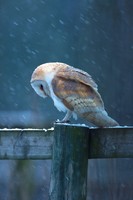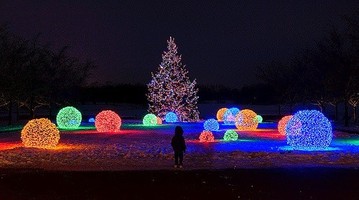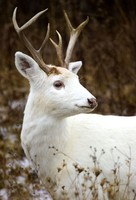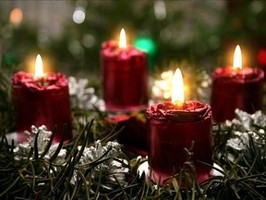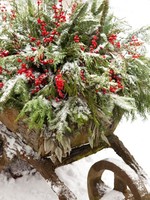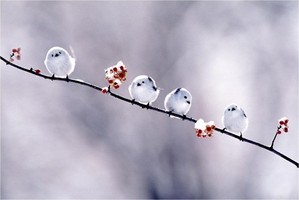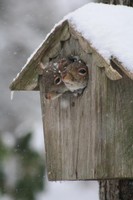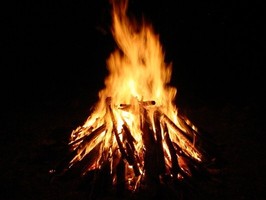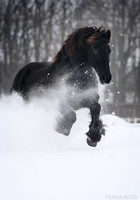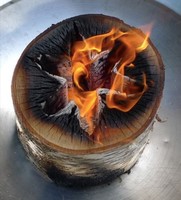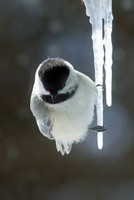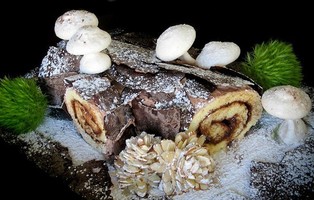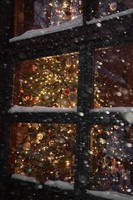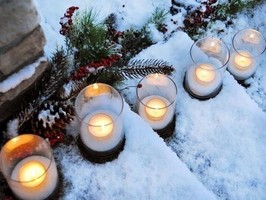
Yule, the Winter Solstice
Yule is the pre-Christian holiday celebrated on the Winter Solstice. Traditions include delicious feasts and gathering around a Yule log fire.

Observing the Shortest Day of the Year
Before there were clocks or calendars, ancient man observed the sun and moon, and many cultures held rituals or events to mark the day with the shortest amount of sunlit hours. This day came to be called Yule, also known as the Winter Solstice. Traditionally, the holiday is marked on December 21st, although physically the astronomical event can fall between December 20th and 23rd for the Northern Hemisphere. In the Southern Hemisphere, this holiday falls on the corresponding dates in June.
Celebrating the Winter Solstice
In Wiccan beliefs, the Sun King is reborn as a new baby on this day, emerging from the fallow period that began with Samhain at the end of October. Gathering around hearth or bonfires all night was one of the most common rituals on this holiday and is the root of the Yule Log tradition known today.
A ritual hearth fire was part of many different cultures observanced of this special night. The tradition of the Yule log varies greatly across the many groups which lit fires for this event. It dates back to 12th century Europe, and was prevalent throughout France and Italy as well. The wood for the Yule log is supposed to be harvested off the owner’s own land, or received as a gift, never purchased. Sometimes this log is harvested as part of Beltane rituals, whereas other cultures cut it fresh for the winter solstice holiday.
At the Winter Solstice, the two god themes of the year's cycle coincide -- even more dramatically than they do at the Summer Solstice. Yule (from the Norse iul, meaning wheel) marks the death and the rebirth of the Sun God; it also marks the vanquishing of the Holly King, the god of the Waning Year, by the Oak King, the God of the Waxing Year. The Goddess, who was Death-in-Life at Midsummer, now shows her Life-in-Death aspect; for although at this season she is the leprous white lady, Queen of the cold darkness, yet this is her moment for giving birth to the Child of Promise, the Son-Lover who will re-fertilize her and bring back light and warmth to her Kingdom.
Modern Christmas celebrations are full of pagan symbology. Santa Claus is the Holly King, the sleigh is the solar chariot, the eight reindeer are the eight Sabbats, their horns represent the Horned God, the North Pole symbolizes the Land of Shadows and the dying solar year, and the gifts are meant both to welcome the Oak King as the sun reborn and as a reminder of the gift of the Holly King, who must depart for the Oak King to rule.

Yule, (pronounced EWE-elle) is when the dark half of the year relinquishes to the light half. Starting the next morning at sunrise, the sun climbs just a little
higher and stays a little longer in the sky each day. Known as Solstice Night, or the longest night of the year, the sun's "rebirth" was celebrated with much joy. On this
night, our ancestors celebrated the rebirth of the Oak King, the Sun King, the Giver of Life that warmed the frozen Earth. From this day forward, the days
would become longer.

Bonfires were lit in the fields, and crops and trees were "wassailed" with toasts of spiced cider. Children were escorted from house to house with gifts of
clove spiked apples and oranges which were laid in baskets of evergreen boughs and wheat stalks dusted with flour. The apples and oranges represented the sun. The boughs were symbolic of
immortality (evergreens were sarcred to the Celts because they did not "die" thereby representing the eternal aspect of the Divine.) The wheat stalks
portrayed the harvest, and the flour was accomplishment of triumph, light, and life. Holly and ivy not only decorated the outside, but also the inside of homes, in hopes Nature Sprites would come and
join the celebration. A sprig of Holly was kept near the door all year long as a constant invitation for good fortune to visit tthe residents. Mistletoe was also hung as decoration. It represented
the seed of the Divine, and at Midwinter, the Druids would travel deep into the forest to harvest it.
The ceremonial Yule log was the highlight of the Solstice festival. In accordance to tradition, the log must either have been harvested from the householder's land,
or given as a gift... it must never have been bought. Once dragged into the house and placed in the fireplace it was decorated in seasonal greenery, doused with cider or ale, and dusted with flour
before set ablaze by a piece of last years log, (held onto for just this purpose). The log would burn throughout the night, then smolder for 12 days after before being ceremonially put out. Ash is
the traditional wood of the Yule log. It is the sacred world tree of the Teutons, known as Yggdrasil. An herb of the Sun, Ash brings light into the hearth at the Solstice.
A different type of Yule log, and perhaps one more suitable for modern practitioners would be the type that is used as a base to hold three candles. Find a smaller branch of oak or pine, and
flatten one side so it sets upright. Drill three holes in the top side to hold red, green, and white (season), green, gold, and black (the Sun God), or white, red, and black (the Great Goddess).
Continue to decorate with greenery, red and gold bows, rosebuds, cloves, and dust with flour.
Many customs created around Yule are identified with Christmas today. If you decorate your home with a Yule tree, holly or candles, you are following some of these
old traditions. The Yule log, (usually made from a piece of wood saved from the previous year.) is burned in the fire to symbolize the Newborn Sun/Son.
Deities of Yule: All Newborn Gods, Sun Gods, Mother Goddesses, and Triple Goddesses. The best known would be the Dagda, and Brighid, the
daughter of the Dagda. Brighid taught the smiths the arts of fire tending and the secrets of metal work. Brighid's flame, like the flame of the new light, pierces the darkness of the spirit and mind,
while the Dagda's cauldron assures that Nature will always provide for all the children.
Symbolism of Yule:
Rebirth of the Sun, The longest night of the year, The Winter Solstice, Introspect, Planning for the Future.
Symbols of Yule:
Yule log, or small Yule log with 3 candles, evergreen boughs or wreaths, holly, mistletoe hung in doorways, gold pillar candles, baskets of clove studded fruit, a simmering pot of wassail,
poinsettias, christmas cactus.
Herbs of Yule:
Bayberry, blessed thistle, evergreen, frankincense holly, laurel, mistletoe, oak, pine, sage, yellow cedar.
Foods of Yule:
Cookies and caraway cakes soaked in cider, fruits, nuts, pork dishes, turkey, eggnog, ginger tea, spiced cider, wassail, or lamb's wool (ale, sugar, nutmeg, roasted apples).
Incense of Yule:
Pine, cedar, bayberry, cinnamon.
Colors of Yule:
Red, green, gold, white, silver, yellow, orange.
Stones of Yule:
Rubies, bloodstones, garnets, emeralds, diamonds.
Activities of Yule:
Caroling, wassailing the trees, burning the Yule log, decorating the Yule tree, exchanging of presents, kissing under the mistletoe, honoring Kriss Kringle the Germanic Pagan God of Yule
Spellworkings of Yule:
Peace, harmony, love, and increased happiness.
Deities of Yule:
Goddesses-Brighid, Isis, Demeter, Gaea, Diana, The Great Mother. Gods-Apollo, Ra, Odin, Lugh, The Oak King, The Horned One, The Green Man, The Divine Child, Mabon.

